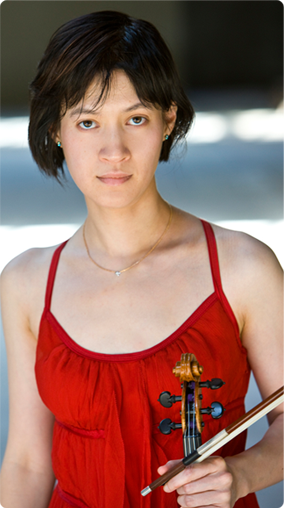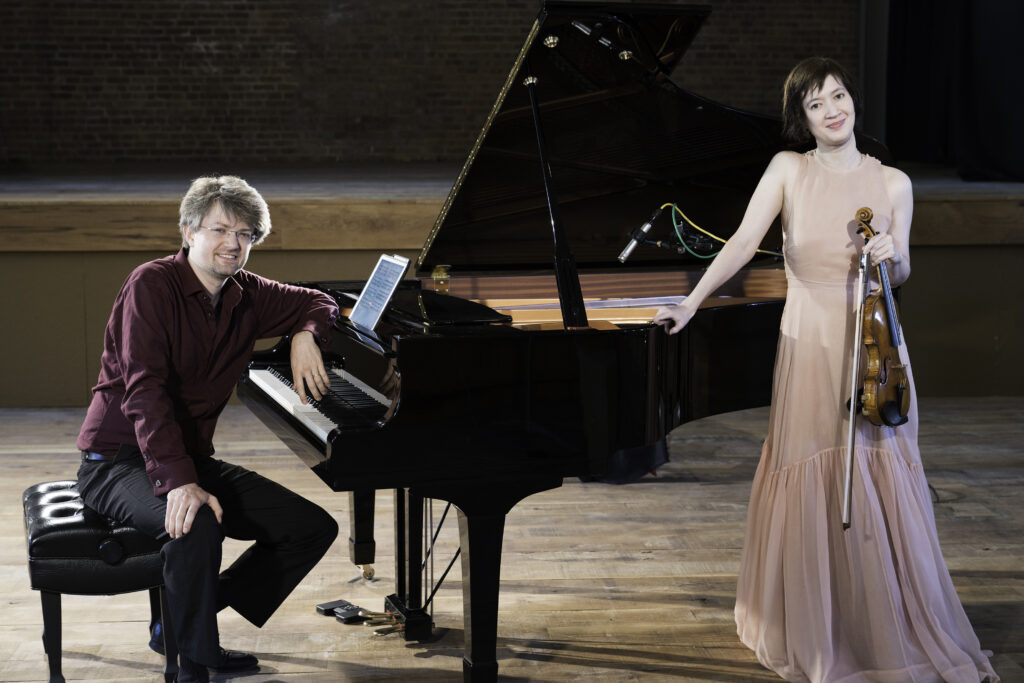
by Kevin T. McEneaney
Miranda Cuckson, one of this country’s first-ranking violinists, performed Sonata No. 5 for solo violin by Eugène Ysaÿe (1858 -1931). Ysaÿe is considered the world’s first modern violinist with tremendous vibrato and rubato; the number of his gifted students became legendary.
In July of 1923 Ysaÿe composed six violin sonatas, all dedicated to notable people in the music world. (There are over fifty different recordings of these six sonatas.) Dedicated to his most famous disciple, Mathieu Crickboom, who played subsequently in the Ysaÿe Quartet,the fifth Sonata is in two parts: L’Aurore; Danse Rustique. (The Fourth Sonata was dedicated to Fritz Kreisler.)
The first movement offers a tour-de-force of technical difficulties that Cuckson handled with eloquent ease, even when playing with vigorous long bowing clear pizzicato fingering, and ethereal emotional tone. The very theme of Dawn appears to announce and illustrate what Ysaÿe’s great pupil can do technically with the violin in the aurora of the aesthetic realm. The second part, far more dramatic, and sometimes at thrilling speed, offers a celebration of Belgian violin folk style wherein peasants may dance into hypnotic, harvest celebration. Cuckson captured that old-time folk fervor, now absent from our semi-quarantined lifestyle.
To help capture the period-feeling of this work J Henry Fair, the cinematographer, filmed in classic black-and-white.
Transformed into color, Cuckson performed Four Lauds for Violin Solo by Elliot Carter (1908-2012). (Although incredibly prolific, Carter wrote only three pieces for solo violin.) The problem that I and others face in listening to Carter’s music is that the music itself is not what I expect it to be. For example, Carter may remove the central rhythm and let tangents flower around it. Carter often employs odd cross-rhythms, triple meter, etc. In general, I find his music, unlike Ysaÿe, to be overly academic. In Lauds, Carter employs all-trichord hexachord and the all-interval tetrachords. Lauds is the liturgical name for morning prayer and mediation, thus in this program, thematically linking to Ysaÿe’s piece which honors musicians he has known.
Carter’s Lauds, written at different times, honor four people he knew quite well: Aaron Copland; Goffredo Petrassi (one of Italy’s foremost composers); Robert Mann, founder and first violinist of the Juilliard Quartet for 52 years; Roger Sessions, the fourth movement closer being the most brilliant and arresting of the four. Like Ysaÿe’s first movement L’Aurore, all four pieces are both character portraits, as well as homage commentaries on their work.
Cuckson’s performance was magnificent and intense. My own favorites were the first and last pieces (the third is less technically challenging and in a sense a setup for the climatic fourth). The first piece appears to be about hard work, then the work is transformed into ethereal beauty, then revised with more shapely effort. The last piece on Sessions is short, mediative, and redolent of generosity. In a general sense this sequence is a meditation on major currents of twentieth century music.

Ross Lee Finney (1906-1997): Fiddle-doodle-ad: Eight American Folk Tunes for violin and piano, accompanied by Ryan MacEvoy McCullough on piano followed. These modern arrangements of American folk tunes offer a contemporary mirror to Ysaÿe’s Danse Rustique, as Finney rearranges popular nineteenth century Stephen Foster tunes, which anyone can appreciate and stomp to. This was a rousing and ebullient conclusion to a half-hour concert that seesawed between technical gymnastics to a broad audience of emotion and popular dance.
If you missed the original stream live you can hear it here.